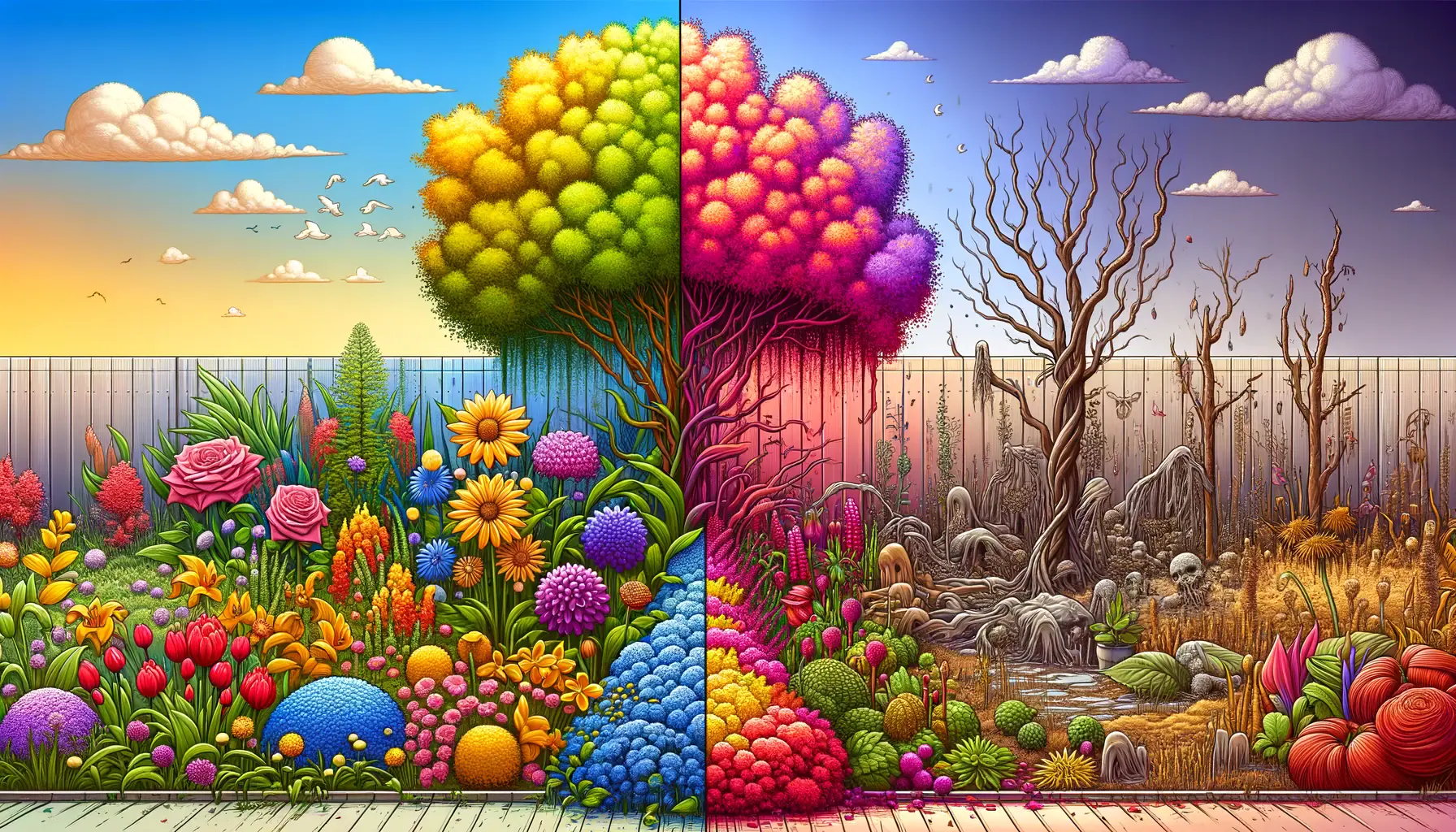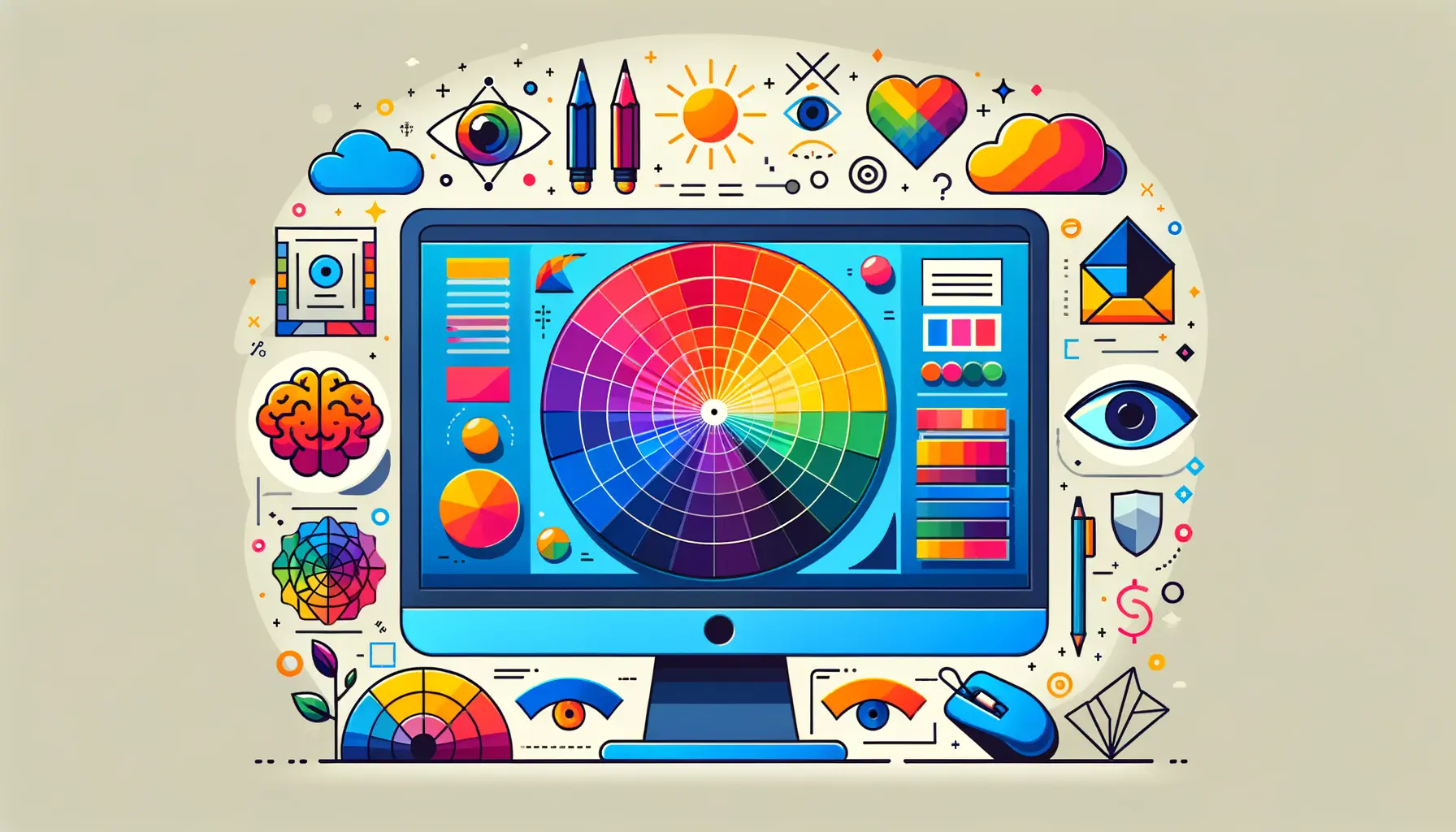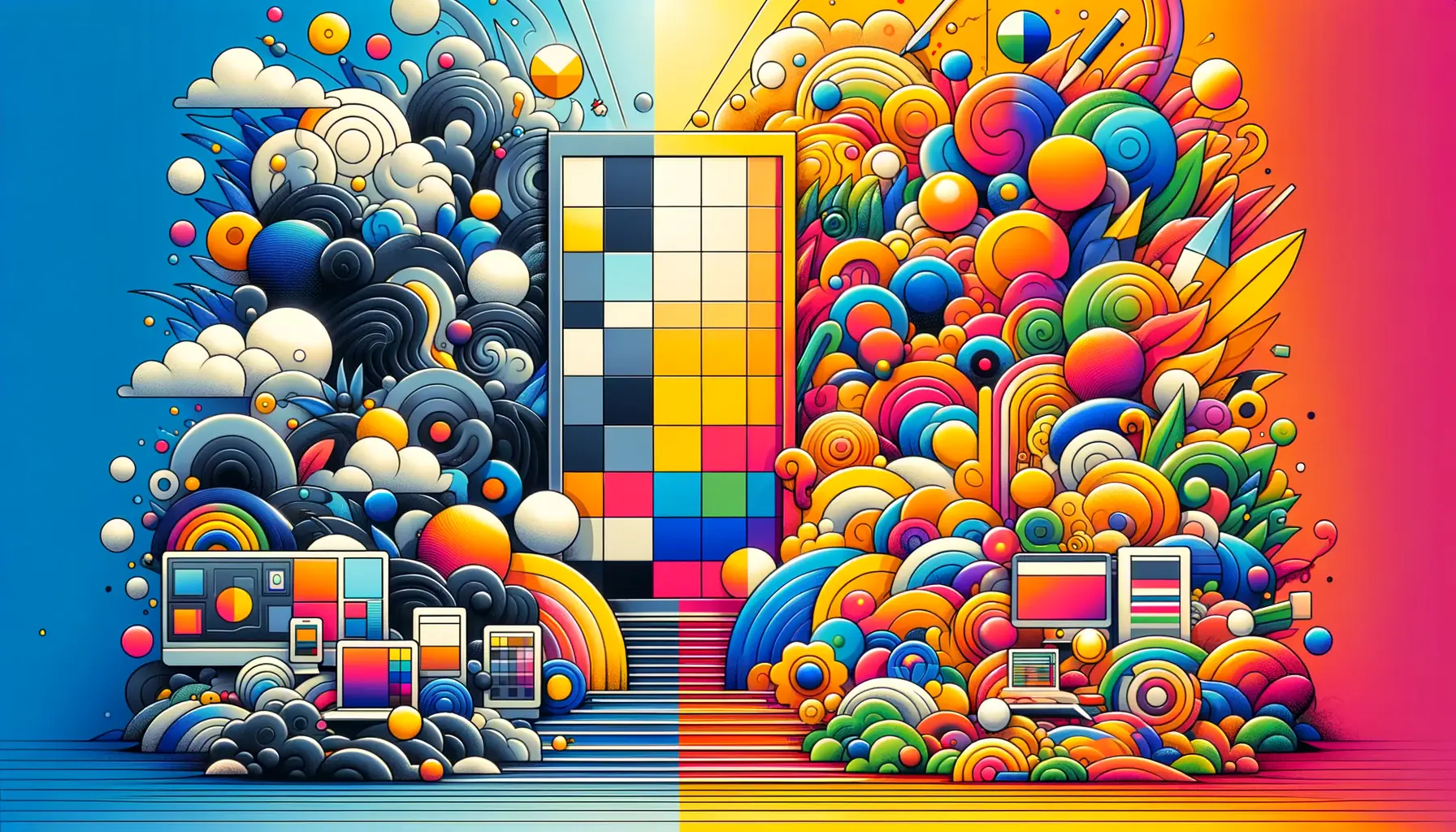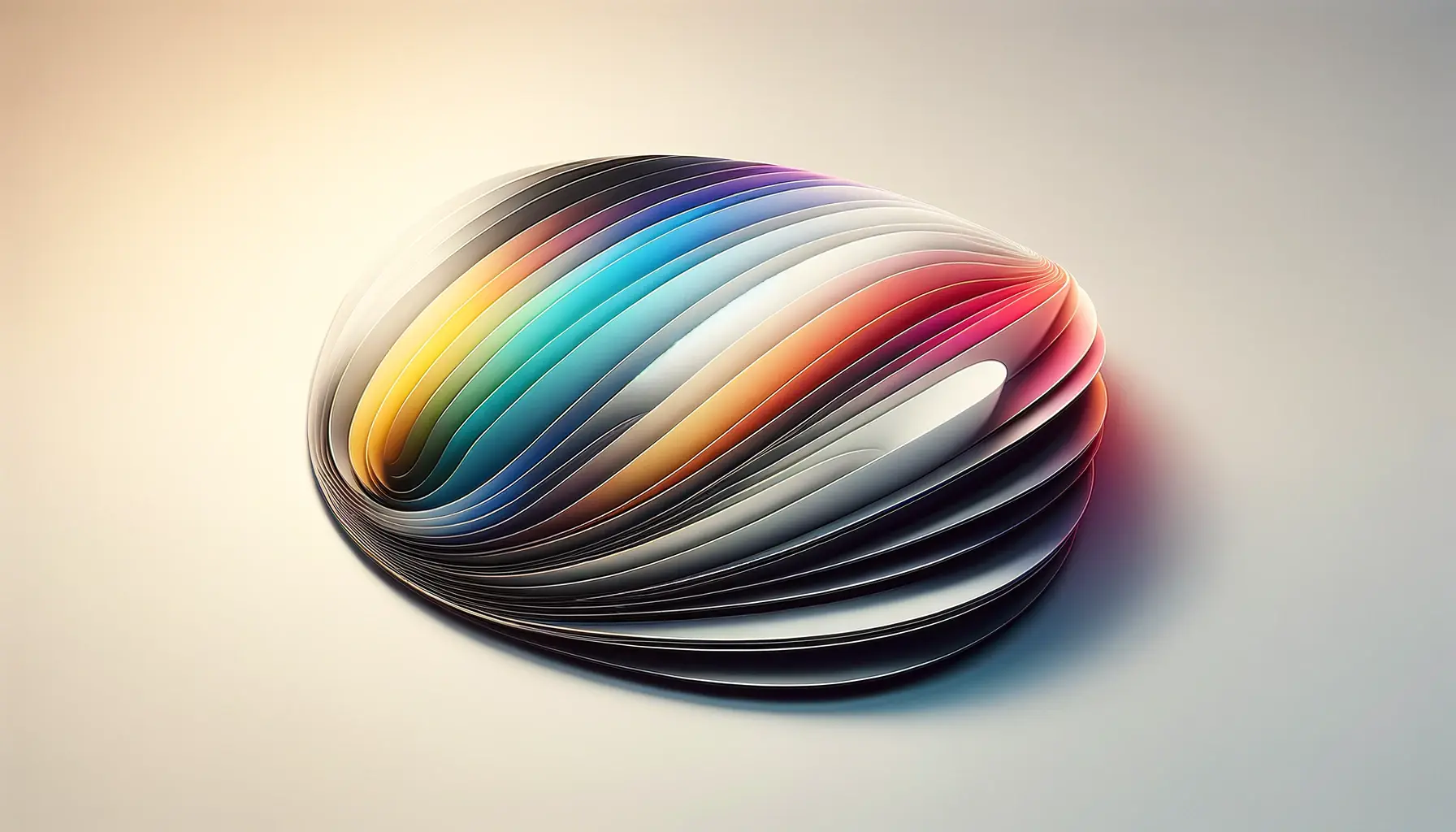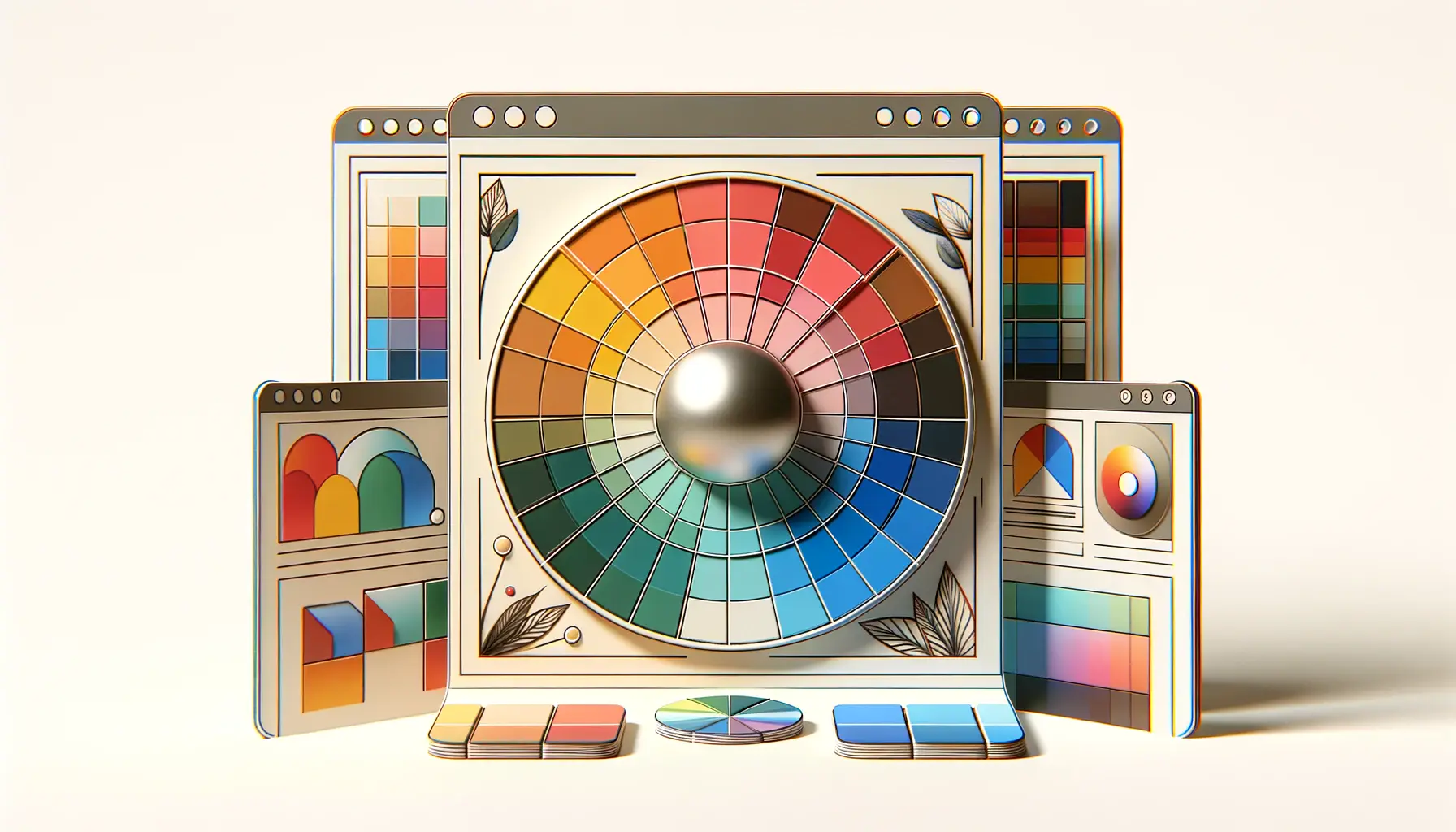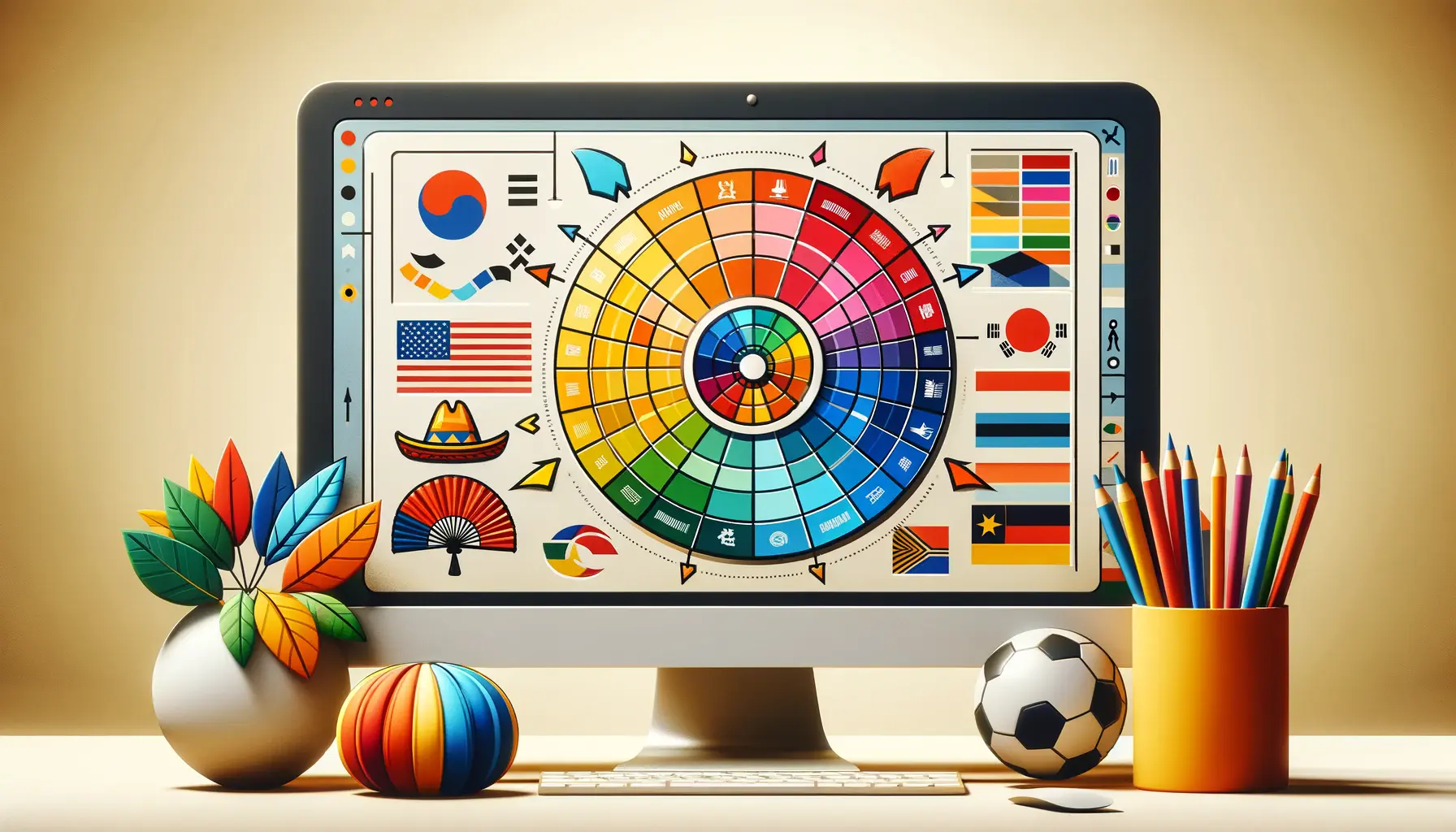The digital landscape is evolving, and with it, the tools and technologies at our disposal for creating more vibrant, engaging web experiences.
Among these advancements, the adoption of wide-gamut color spaces stands out as a significant leap forward for web designers and developers alike.
This shift towards wider color gamuts offers an opportunity to push the boundaries of visual design, enabling the creation of websites that are not only more aesthetically pleasing but also more true-to-life.
Wide-gamut color spaces encompass a broader range of colors compared to their sRGB counterparts, which have been the standard in web design for years.
This expansion in color range allows for more saturated and vivid colors, making it possible to convey a deeper and more accurate representation of reality on digital screens.
The transition to wide-gamut color spaces is not just a technical upgrade; it’s a paradigm shift that challenges web designers to rethink color theory and its application in digital environments.
- Understanding Wide-gamut Color Spaces
- Challenges and Solutions in Implementing Wide-gamut Color Spaces
- Color Management for Wide-gamut Web Design
- Best Practices for Wide-gamut Color in Web Design
- Designing for the Future: Wide-gamut and Beyond
- Incorporating Wide-gamut Colors in User Interface Design
- Future-proofing Web Design with Wide-gamut Colors
- Embracing the Spectrum: The Future of Web Design with Wide-gamut Colors
- Wide-gamut Color Spaces in Web Design: FAQs
Understanding Wide-gamut Color Spaces
The Basics of Color Spaces
At the core of leveraging wide-gamut color spaces for web design is a fundamental understanding of what color spaces are and how they function.
A color space is essentially a specific organization of colors, which in digital terms, allows for the reproduction of colors on various devices like monitors, TVs, and mobile screens.
The most commonly used color space for the web has been sRGB, which stands for standard Red Green Blue.
It was designed to match the typical computer monitor and is suitable for most web uses.
However, it covers only a portion of the visible color spectrum.
Wide-gamut color spaces, such as Adobe RGB, DCI-P3, and Rec.
2020, extend beyond the limitations of sRGB, covering a larger portion of the visible spectrum.
This means they can display more colors—colors that are more saturated and, in many cases, more aligned with what the human eye can actually perceive.
The significance of this for web design is profound, offering a richer palette from which to draw and the ability to create more lifelike and immersive digital experiences.
Benefits of Wide-gamut Color Spaces in Web Design
The adoption of wide-gamut color spaces in web design brings several benefits.
Firstly, it allows for the display of more vibrant and diverse colors, enabling designers to create more visually striking websites.
This is particularly beneficial for brands looking to stand out or convey a specific mood or tone through their online presence.
Moreover, wide-gamut color spaces can enhance the realism of images and videos, making them more engaging and potentially improving user experience.
Another advantage is the improved consistency in color representation across different devices.
As more devices support wide-gamut color spaces, the variation in color appearance from screen to screen decreases, leading to a more uniform and predictable design outcome.
This consistency is crucial for brand identity and ensures that users have a similar experience regardless of the device they use.
Embracing wide-gamut color spaces is not just about enhancing aesthetics; it’s about pushing the envelope of what’s possible in web design, offering a more dynamic and immersive user experience.
Challenges and Solutions in Implementing Wide-gamut Color Spaces
While the benefits of integrating wide-gamut color spaces into web design are clear, the transition is not without its challenges.
These hurdles range from technical limitations to the need for broader industry adoption.
However, with every challenge comes a solution, and understanding these can help web designers and developers navigate the complexities of wide-gamut color implementation effectively.
Technical Limitations and Compatibility Issues
The first major challenge is the technical limitations and compatibility issues across different devices and web browsers.
Not all devices support wide-gamut color spaces, and even among those that do, the level of support can vary.
This discrepancy can lead to inconsistencies in how colors are displayed, potentially affecting the user’s experience and the designer’s intended visual outcome.
- Solution: To mitigate these issues, it’s essential to use color management techniques. Implementing CSS color-gamut media queries allows designers to determine if a user’s device supports wide-gamut colors and adjust the design accordingly. Additionally, providing fallbacks to sRGB for devices that do not support wide-gamut colors ensures a consistent experience for all users.
Increased Design and Testing Complexity
Another challenge is the increased complexity in design and testing.
Designing for wide-gamut color spaces requires a good understanding of color theory and how different colors interact within these broader ranges.
Additionally, testing designs across a variety of devices and browsers to ensure color accuracy and consistency can be more time-consuming and complex.
- Solution: Leveraging design tools and software that support wide-gamut color spaces can significantly ease this process. Designers should also adopt a test-driven approach, utilizing tools and platforms that simulate different devices and browsers, ensuring that designs maintain their integrity across various viewing conditions.
Education and Awareness
A less technical but equally important challenge is the lack of education and awareness around wide-gamut color spaces.
Many web designers and developers may not be fully aware of the benefits or how to effectively implement these color spaces in their projects.
- Solution: Increasing education and awareness through workshops, tutorials, and articles can empower more professionals to explore and adopt wide-gamut color spaces. Industry leaders and communities can play a significant role in this by sharing knowledge and resources.
Understanding and overcoming the challenges associated with wide-gamut color spaces are crucial steps towards their successful integration into web design. By addressing these issues head-on, designers and developers can unlock the full potential of wide-gamut colors, leading to richer and more immersive web experiences.
Color Management for Wide-gamut Web Design
Effective color management is pivotal in harnessing the full potential of wide-gamut color spaces in web design.
It ensures that the colors chosen during the design process are accurately displayed across various devices and platforms, maintaining the visual integrity of the web experience.
This section delves into the key aspects of color management for wide-gamut web design, offering insights into creating consistent and vibrant digital experiences.
Color management involves a series of steps and tools designed to maintain color consistency across different devices.
For web designers working with wide-gamut color spaces, understanding and implementing these practices is essential.
The goal is to achieve a seamless visual experience, where colors look as intended regardless of the viewing device.
Understanding Color Profiles and Conversion
At the heart of color management is the use of color profiles, which describe the color attributes of a device or digital file.
These profiles allow for the accurate translation of colors from the design stage to the final user experience.
When working with wide-gamut color spaces, it’s crucial to select and embed the appropriate color profiles in your digital assets.
- Ensure that images and graphics are saved with the correct color profile (e.g., Adobe RGB or Display P3) to preserve their wide-gamut range.
- Use color conversion tools and software that can accurately map colors from your design space to the target output space, minimizing color shifts.
Implementing CSS for Color Management
CSS plays a significant role in color management for web design.
With the advent of CSS4, new properties and functions have been introduced that allow for more precise color specification and management, including support for wide-gamut color spaces.
- Utilize the `color-gamut` media feature to tailor your designs to the color capabilities of the user’s device.
- Employ CSS color functions like `color()` and `lab()`, which support wide-gamut colors and offer more flexibility in defining colors.
Testing and Calibration
Regular testing and calibration are essential to ensure that colors display correctly across all devices.
This involves using color calibration tools to adjust your design and development monitors, as well as testing your web designs on various devices to see how colors are rendered in different environments.
- Invest in a good quality monitor calibrator and regularly calibrate your design devices to ensure accurate color representation.
- Use web development tools and emulators to simulate how your designs will look on different devices, adjusting your designs as needed to ensure color consistency.
Proper color management is the linchpin in leveraging wide-gamut color spaces for web design, ensuring that the vibrant and diverse colors chosen during the design process translate effectively to the end user’s screen.
Best Practices for Wide-gamut Color in Web Design
Integrating wide-gamut color spaces into web design requires more than just technical knowledge and the right tools.
It also involves adopting best practices that ensure the effective use of these vibrant colors, enhancing the user experience without overwhelming it.
This section outlines essential strategies for web designers looking to make the most out of wide-gamut color capabilities.
Adopting wide-gamut color spaces offers a unique opportunity to elevate web design, but it also demands a thoughtful approach to color selection, user experience, and cross-device consistency.
Here are some best practices to guide you through the process.
Strategic Use of Color
Wide-gamut color spaces unlock a spectrum of colors that are more saturated and vibrant than those available in sRGB.
However, the key to leveraging these colors effectively is not to use them indiscriminately but to apply them strategically to enhance the design and user experience.
- Use wide-gamut colors to draw attention to key elements on the page, such as call-to-action buttons or important information.
- Balance vibrant colors with more subdued shades to create a harmonious and visually appealing design.
Ensuring Accessibility
While wide-gamut colors can make designs more dynamic and engaging, it’s crucial to ensure that your website remains accessible to all users, including those with visual impairments.
Accessibility should never be compromised for the sake of aesthetic appeal.
- Conduct accessibility testing to ensure that text is readable and that there is sufficient contrast between foreground and background colors.
- Use color but not as the sole means of conveying information, ensuring that your content is accessible to users who may not perceive color in the same way.
Optimizing for Performance
Implementing wide-gamut colors can impact website performance, particularly if it involves the use of high-resolution images and graphics.
Optimizing these assets is crucial to maintaining fast load times and a smooth user experience.
- Compress images and use appropriate file formats that support wide-gamut colors without unnecessarily inflating file sizes.
- Implement lazy loading for images and other media-rich content to improve page load times.
Testing Across Devices and Browsers
Finally, thorough testing across a range of devices and browsers is essential to ensure that your use of wide-gamut colors translates well in different viewing environments.
This helps identify any inconsistencies and allows for adjustments to be made for a consistent user experience.
- Use device emulation tools to preview how colors appear on different screens, including those with and without wide-gamut color support.
- Regularly update your testing practices to include new devices and browser versions as they become available.
Embracing wide-gamut colors in web design is about more than just brighter, more vibrant colors. It’s about using these colors thoughtfully to create a more immersive and accessible user experience, all while maintaining performance and consistency across devices.
Designing for the Future: Wide-gamut and Beyond
The evolution of web design technologies is relentless, with wide-gamut color spaces representing just one of the many advancements shaping the future of digital experiences.
As we look beyond the current state of wide-gamut implementation, it’s clear that the future holds even more possibilities for creating immersive, engaging, and lifelike web environments.
This forward-looking perspective encourages designers and developers to stay ahead of the curve, preparing for the next wave of innovations.
Embracing wide-gamut color spaces today is not just about enhancing the visual appeal of web designs; it’s about setting the foundation for future advancements in digital media and user experience.
As technology continues to evolve, the principles and practices developed for wide-gamut color implementation will serve as a valuable framework for exploring new frontiers in web design.
Emerging Technologies and Their Impact on Web Design
As we consider the future of web design, several emerging technologies stand out for their potential to further transform how we create and experience digital content.
High Dynamic Range (HDR) video, 3D graphics, and virtual reality (VR) are just a few examples of technologies that, when combined with wide-gamut color spaces, could offer unprecedented levels of realism and immersion.
- High Dynamic Range (HDR) video enhances the contrast and color range of visual content, making it a perfect complement to wide-gamut color spaces for creating lifelike images and videos.
- 3D graphics and VR technologies benefit from the expanded color range of wide-gamut spaces, allowing for more vibrant and realistic virtual environments.
Adapting to Changing User Expectations
As these technologies mature and become more accessible, user expectations for web experiences will inevitably rise.
Users will come to expect not just visually appealing designs, but also immersive experiences that leverage the full capabilities of their devices.
This shift in expectations will challenge web designers and developers to continuously innovate and adapt their practices to meet the demands of the future.
- Staying informed about technological advancements and their implications for web design is crucial for staying ahead of user expectations.
- Experimenting with new technologies and color capabilities as they emerge will help designers and developers create more engaging and immersive web experiences.
Preparing for the Future
Preparing for the future of web design means embracing change and being willing to explore new possibilities.
Wide-gamut color spaces are just the beginning.
By adopting a forward-thinking approach and continuously seeking out new technologies and techniques, designers and developers can ensure that their work remains at the cutting edge of digital design.
- Invest in learning and development opportunities to stay current with the latest web design trends and technologies.
- Collaborate with peers and participate in design communities to share knowledge and explore innovative design solutions together.
The journey into wide-gamut color spaces and beyond is an exciting opportunity for web designers and developers to redefine the boundaries of digital experiences. By looking forward and embracing the possibilities, we can create web environments that are not only visually stunning but also deeply engaging and immersive for users around the globe.
Incorporating Wide-gamut Colors in User Interface Design
The integration of wide-gamut colors into user interface (UI) design represents a significant opportunity to enhance user engagement and improve the overall aesthetic of digital products.
As UI design is a critical element in the user experience, leveraging the broader spectrum of colors available in wide-gamut color spaces can make interfaces more vibrant, intuitive, and enjoyable.
This section explores how wide-gamut colors can be effectively incorporated into UI design, focusing on practical strategies and considerations.
Utilizing wide-gamut colors in UI design requires a thoughtful approach, balancing the desire for more vibrant colors with the need for clarity, usability, and accessibility.
The following strategies can help designers navigate these considerations, ensuring that the use of wide-gamut colors enhances rather than detracts from the user experience.
Enhancing Visual Hierarchy with Wide-gamut Colors
One of the primary roles of color in UI design is to establish a clear visual hierarchy, guiding users through the interface in an intuitive manner.
Wide-gamut colors, with their increased vibrancy and saturation, can be particularly effective in drawing attention to key elements, such as buttons, notifications, and calls to action.
- Use wide-gamut colors to highlight important actions or information, making them stand out against a more neutral background.
- Employ contrasting wide-gamut colors to differentiate between interactive elements and static content, enhancing navigability.
Creating Mood and Enhancing Brand Identity
Color is a powerful tool for conveying mood and reinforcing brand identity.
The expanded palette offered by wide-gamut color spaces allows for more nuanced and expressive color schemes that can align closely with a brand’s visual identity and the emotional tone it aims to convey.
- Select wide-gamut colors that reflect the brand’s personality and values, using them consistently across the UI to strengthen brand recognition.
- Consider the psychological impact of colors when designing the UI, choosing wide-gamut hues that evoke the desired emotional response from users.
Ensuring Accessibility and Usability
While the allure of wide-gamut colors is undeniable, it’s essential to prioritize accessibility and usability in UI design.
This means ensuring that color choices do not hinder the readability of text, the visibility of interactive elements, or the overall navigability of the interface for users with visual impairments.
- Conduct accessibility testing to ensure that color contrasts meet WCAG guidelines, making adjustments as necessary to accommodate all users.
- Use color in conjunction with other visual cues (e.g., text labels, icons) to ensure that information is accessible to users with color vision deficiencies.
Assuming that more vibrant colors automatically lead to a better user interface is a misconception. The key to successfully incorporating wide-gamut colors into UI design lies in their strategic application, enhancing the interface’s visual appeal and usability without compromising accessibility.
Future-proofing Web Design with Wide-gamut Colors
The rapid evolution of web technologies and display capabilities necessitates a forward-looking approach to web design, one that not only addresses current trends but also anticipates future developments.
Wide-gamut color spaces are at the forefront of this evolution, offering a glimpse into the future of digital experiences.
As such, future-proofing web designs with wide-gamut colors is not just about leveraging these vibrant hues today but ensuring that web experiences remain relevant and engaging in the years to come.
Future-proofing with wide-gamut colors involves understanding the trajectory of web technology and user expectations, as well as the ongoing evolution of color standards and display technologies.
By adopting wide-gamut colors now, designers and developers can set a foundation that adapts to and capitalizes on future advancements.
Adapting to Evolving Display Technologies
As display technologies continue to advance, supporting a wider range of colors and higher levels of brightness and contrast, web designs must evolve to make the most of these capabilities.
Wide-gamut color spaces are integral to this evolution, enabling designs that fully utilize the enhanced color range and depth offered by modern displays.
- Stay informed about advancements in display technology and standards, incorporating these developments into your design strategy.
- Design with scalability in mind, ensuring that your use of color can adapt to and take advantage of future display capabilities.
Meeting and Exceeding User Expectations
User expectations for digital experiences are constantly rising, driven by advancements in technology and design.
Incorporating wide-gamut colors into web design not only meets these growing expectations but can also exceed them, setting new standards for visual richness and engagement.
- Monitor trends in user behavior and preferences, using this insight to inform your design decisions and stay ahead of expectations.
- Experiment with innovative uses of wide-gamut colors to create unique and memorable web experiences that captivate users.
Embracing Continuous Learning and Innovation
The key to future-proofing web design lies in a commitment to continuous learning and innovation.
As wide-gamut color spaces become more prevalent, staying abreast of best practices, emerging trends, and new technologies is essential for creating web experiences that are not only relevant today but will remain so in the future.
- Engage with the design and development community to share knowledge and explore creative applications of wide-gamut colors.
- Invest in ongoing education and training to refine your skills and understanding of wide-gamut color technologies and their potential applications.
Future-proofing web design with wide-gamut colors is an investment in the quality and longevity of digital experiences. By embracing the possibilities offered by these advanced color spaces, designers and developers can create web experiences that not only stand out today but will continue to resonate with users in the future.
Embracing the Spectrum: The Future of Web Design with Wide-gamut Colors
The journey through the vibrant world of wide-gamut color spaces reveals a future where web design transcends current visual limitations, offering a palette that is as rich and diverse as the human experience itself.
As we’ve explored the benefits, challenges, and best practices associated with wide-gamut colors, it’s clear that their integration into web design is not merely a trend but a significant shift towards creating more immersive, expressive, and inclusive digital environments.
This conclusion aims to weave together the insights gained, highlighting the transformative potential of wide-gamut colors in shaping the future of web design.
The Path Forward with Wide-gamut Colors
Wide-gamut color spaces are more than just a technical enhancement; they represent a new frontier in digital creativity and user engagement.
By offering a broader spectrum of colors, they enable designers to craft experiences that are more vivid, realistic, and emotionally resonant.
The path forward with wide-gamut colors is one of exploration and innovation, where the boundaries of digital expression are continually expanded to meet and exceed user expectations.
- Enhanced Visual Communication: Wide-gamut colors allow for more nuanced and precise visual storytelling, enabling designers to convey complex emotions and themes with greater depth and clarity.
- Improved User Experience: By leveraging the full potential of wide-gamut color spaces, designers can create interfaces that are not only visually stunning but also more intuitive and accessible.
- Future-proof Designs: As display technologies evolve, designs that incorporate wide-gamut colors will remain at the forefront of visual quality, ensuring longevity and relevance in a rapidly changing digital landscape.
Charting a Course for Wide-gamut Integration
The integration of wide-gamut colors into web design is a journey that requires foresight, creativity, and a commitment to excellence.
As we chart a course for this integration, it’s essential to embrace both the opportunities and challenges that come with these advanced color spaces.
By doing so, designers and developers can unlock new possibilities for engagement, expression, and innovation.
- Continuous Learning: Staying informed about the latest developments in color science and web technology is crucial for effectively leveraging wide-gamut colors.
- Collaborative Exploration: Engaging with the design community to share insights, challenges, and successes can accelerate the adoption of wide-gamut colors and foster collective growth.
- User-Centered Design: Prioritizing the needs and preferences of users ensures that the use of wide-gamut colors enhances rather than complicates the user experience.
In conclusion, leveraging wide-gamut color spaces for web design is a transformative practice that opens up new horizons for digital creativity and user engagement.
As we embrace the full spectrum of possibilities offered by these advanced color spaces, we can look forward to a future where web experiences are not only more visually captivating but also more inclusive, expressive, and aligned with the evolving landscape of digital technology.
The journey into wide-gamut colors is just beginning, and its potential to redefine the aesthetics of the web is as boundless as the palette it provides.
Quality web design is key for a great website! Check out our service page to partner with an expert web design agency.
Wide-gamut Color Spaces in Web Design: FAQs
Explore common questions about leveraging wide-gamut color spaces in web design to enhance your projects.
Wide-gamut color spaces encompass a broader range of colors than standard RGB, allowing for more vibrant and diverse visual experiences on the web.
They enable designers to create more vivid, lifelike, and engaging digital environments, enhancing the user’s visual experience.
Properly optimized, they have minimal impact on performance while significantly improving visual quality and user engagement.
No, not all devices support wide-gamut colors, but adoption is growing, with many modern devices featuring wide-gamut displays.
Use CSS color-gamut media queries to detect if a user’s device supports wide-gamut colors and adjust your design accordingly.
Yes, when used thoughtfully, they can enhance accessibility by improving clarity and contrast, but always test for color contrast and readability.
Utilize CSS4 color functions and properties, such as color-gamut media features and lab() color values, to specify wide-gamut colors.
As display technologies evolve, wide-gamut colors will become standard, offering designers a richer palette for creating immersive web experiences.

